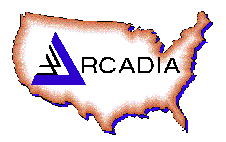Note: The Arcadia project ended in 1997. This web site is for archival purposes;
we can no longer guarantee liveness of links.
 The Arcadia Philosophy
The Arcadia Philosophy
The primary goal of the Arcadia project is to carry out validated
research in the area of software engineering environments. In the
course of this research, the Arcadia project has discovered a wide
range of concepts and capabilities we believe to be key to success in
building an effective environment. This research has focused on
developing advanced prototypes to demonstrate feasibility of our
concepts, and on demonstrating that these key capabilities can be
successfully integrated into an operational whole. Our insistence on
integrating the various Arcadia constituent components has served as a
crucially important forcing function, compelling all of us to consider
overall environment architecture issues and usage contexts in
designing and developing individual components. Our experiences in
building these components and in assembling them have confirmed and
validated many of our research ideas. These experiences have also
pointed up some unexpected problems, which has often led to new
research and implementation insights.
The Arcadia project believes that an effective software engineering
environment (SEE) is a collection of capabilities effectively
integrated to support software developers and managers in their work.
For an SEE to be effective it must be:
- Interoperable:
- The tools and capabilities of an environment cannot stand in parallel
isolation and ignorance of each other. Rather, they must be able to
readily share data and results with each other. Their progress must
affect, and be affected by, each other's activities.
- Extensible:
- The capabilities of an environment must constantly grow and expand.
As software engineering matures as a discipline, and as the commercial
marketplace of software tools expands, an effective SEE must be
capable of absorbing new tools and ideas. It is a mistake to attempt
to specify the functional requirements for an SEE in advance and then
design it to meet only these prescribed requirements.
- Incrementally Improvable:
- The growth and maturation of the discipline and commercial marketplace
also assures the steady improvement in the quality and capabilities of
available tools. Thus an SEE must be capable of absorbing steadily
improving technology.
- Flexible:
- The needs of software developers and managers are diverse, varying
from project to project and from time to time, with differing and
changing roles. An SEE must continue to support these individuals
effectively throughout these changes. Thus, the SEE and its
capabilities must be extremely flexible and adaptable.
- Fast:
- As with all computer systems, performance is of great importance in an
SEE. Users will expect rapid response to requests for services that
they regard as straightforward, and can be expected to be impatient
for response, even to requests for services that they know to entail
considerable processing.
- Efficient:
- An SEE can be expected to be a voracious consumer of computer
resources -- including processing time and storage space. Demands
for resources to support the development and maintenance of large
software strain the limits of contemporary hardware systems.
Thus, an effective SEE must take care to utilize hardware resources
efficiently, lest the cost of the SEE's support become unaffordable.
- Able to Support Multiple Users and User Classes:
- The engineering of large software systems requires the collaboration
of many diverse users. An SEE must support effective interaction and
communication among those users. As the raw number of users grows,
the problems of effective coordination grow. The diversity of users
poses the additional problem of assuring that the SEE provides a
corresponding diversity of support.
- Easy to Use:
- If an SEE is to support users, then it must not itself become an
obstacle. Users must find it easy to understand what capabilities the
SEE offers, and how to use them effectively.
- Able to support effective product and process visibility:
- The essence of what makes software engineering difficult is that the
software product being built is unexpectedly large and complex. This
makes it hard for developers and managers to maintain complete and
accurate models of the product in their minds. An effective SEE must
help users to form and analyze accurate product models. Further, the
way in which the product is developed is also unexpectedly complex,
challenging developers and managers to maintain accurate product and
project status models. The SEE must facilitate process visibility as
well.
- Able to support effective management control:
- Managers must use visibility and insight into a project as the basis
for making decisions that control project progress. An SEE must,
therefore, provide support for more than just visibility. The SEE
must also support managers in making changes and controlling the
project. The SEE must help in controlling access to data, assigning
people to tasks, forcing and halting progress from phase to phase, and
establishing and terminating communications streams.
Over a period of years, the Arcadia project has evolved an environment
architecture designed to effectively address all of the above goals
simultaneously. One of the important lessons from the Arcadia project
is that various of these design goals are not orthogonal, and in fact
are often in conflict with each other. Many of the primary lessons of
Arcadia have dealt with understanding the various tensions between these
diverse desiderata. Much of the most challenging work of the Arcadia
project has been concerned with devising strategies for supporting
adjustable compromises between conflicting SEE goals.
The Arcadia Project
<arcadia-www@ics.uci.edu>
Last modified: Wed Nov 30 14:24:44 1994